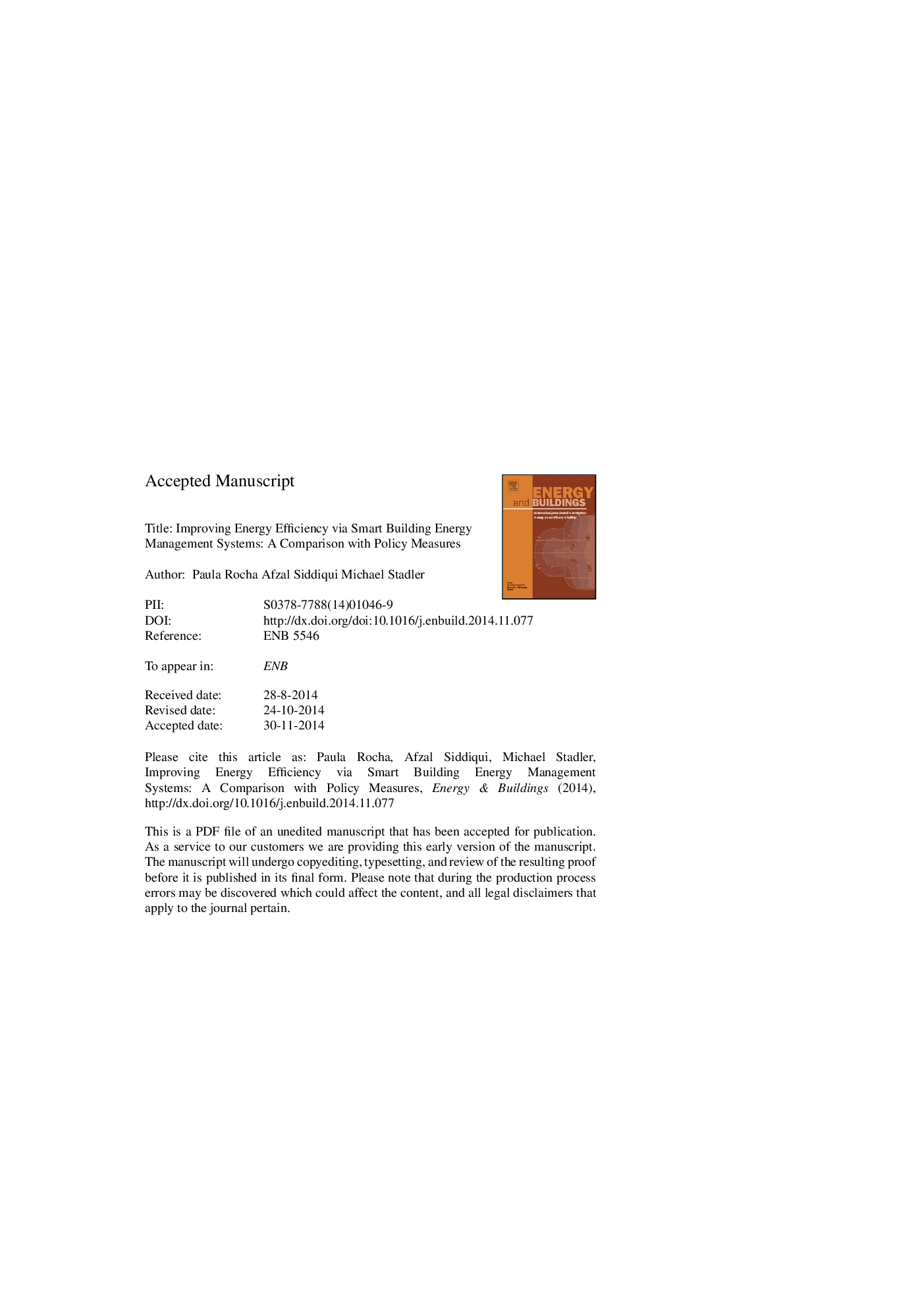| Article ID | Journal | Published Year | Pages | File Type |
|---|---|---|---|---|
| 6732426 | Energy and Buildings | 2015 | 46 Pages |
Abstract
To foster the transition to more sustainable energy systems, policymakers have been approving measures to improve energy efficiency as well as promoting smart grids. In this setting, building managers are encouraged to adapt their energy operations to real-time market and weather conditions. Yet, most fail to do so as they rely on conventional building energy management systems (BEMS) that have static temperature set points for heating and cooling equipment. In this paper, we investigate how effective policy measures are at improving building-level energy efficiency compared to a smart BEMS with dynamic temperature set points. To this end, we present an integrated optimisation model mimicking the smart BEMS that combines decisions on heating and cooling systems operations with decisions on energy sourcing. Using data from an Austrian and a Spanish building, we find that the smart BEMS results in greater reduction in energy consumption than a conventional BEMS with policy measures.
Keywords
Related Topics
Physical Sciences and Engineering
Energy
Renewable Energy, Sustainability and the Environment
Authors
Paula Rocha, Afzal Siddiqui, Michael Stadler,
